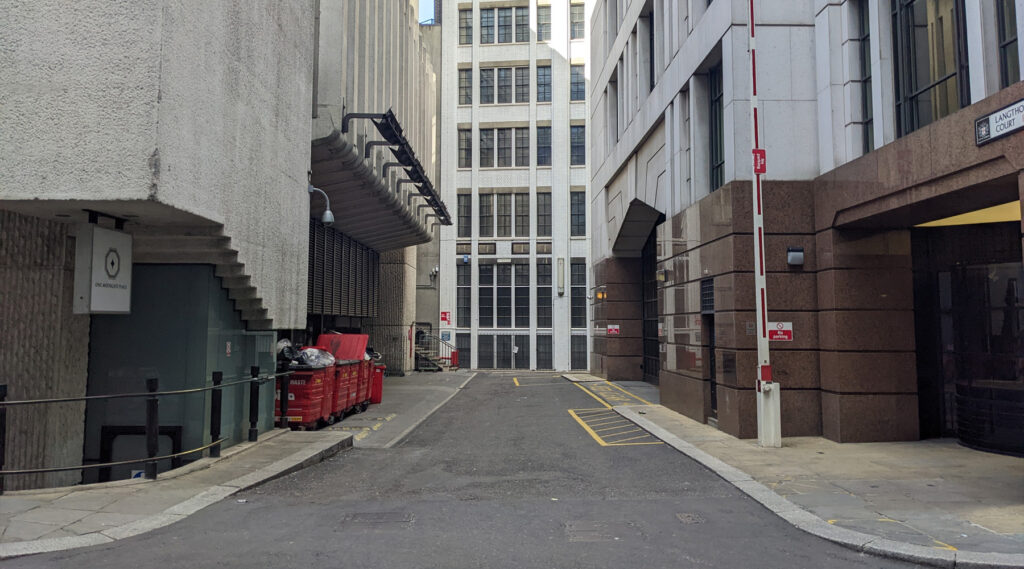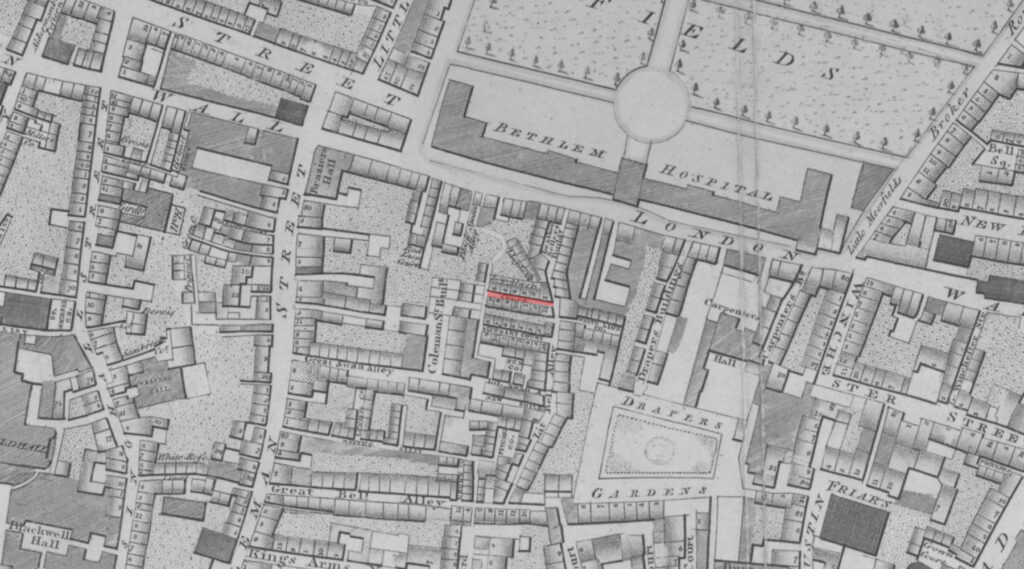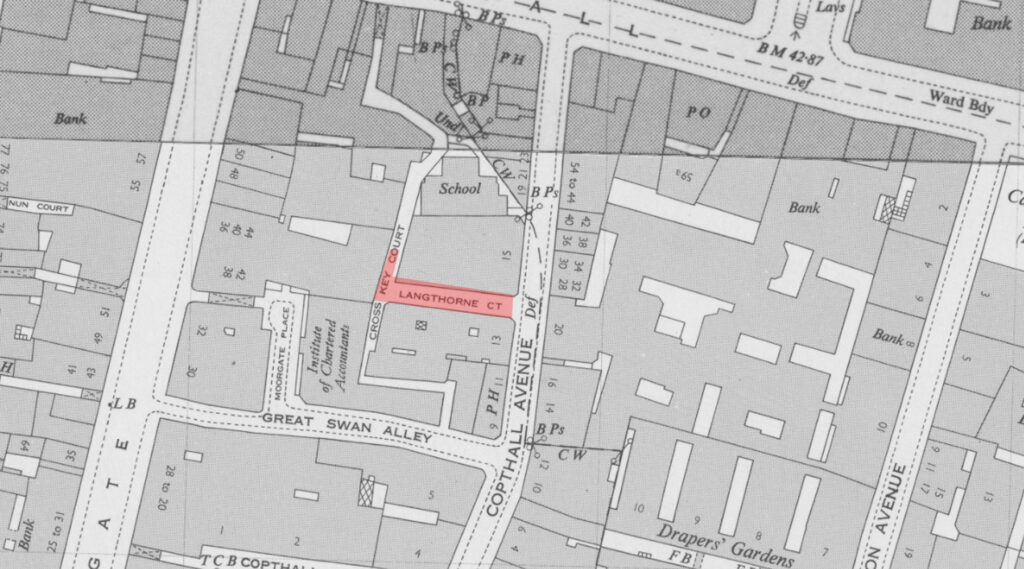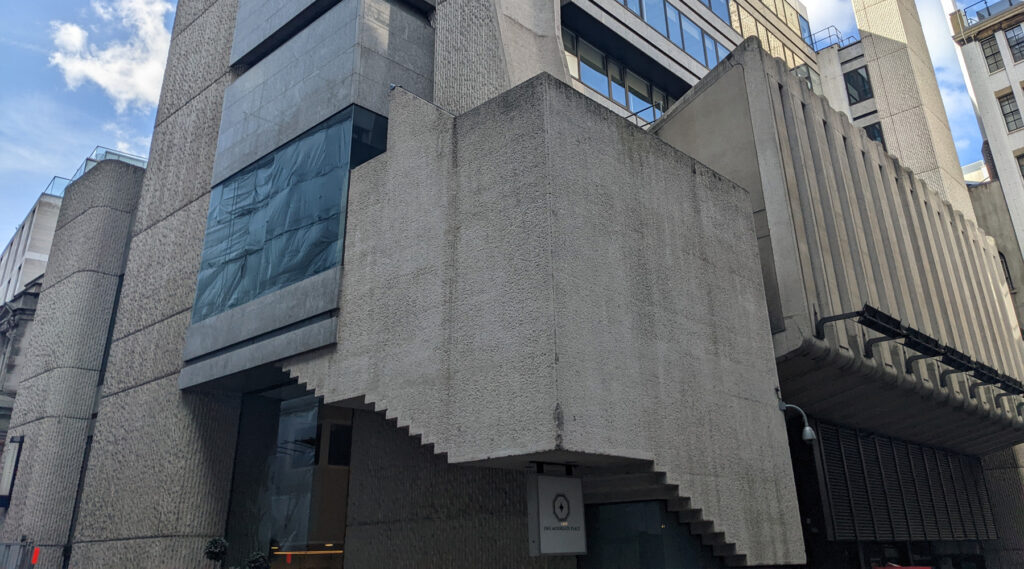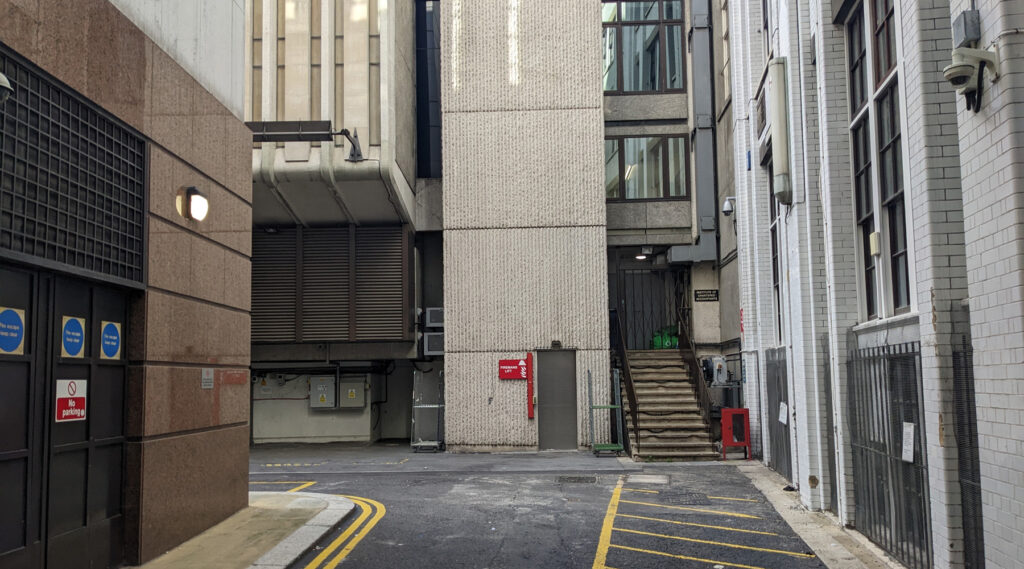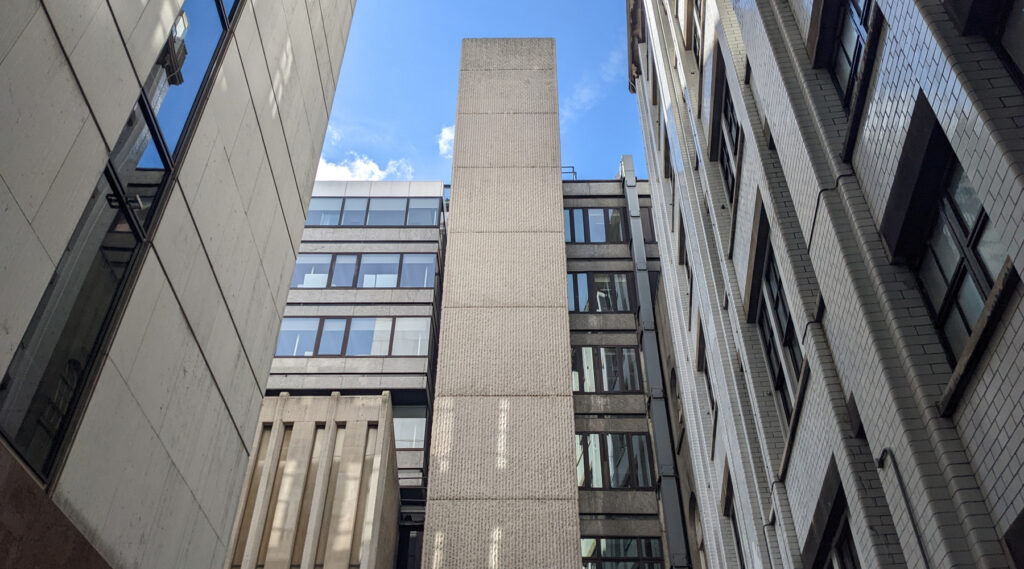This is a short alley hidden around the back of city offices that has a very confusing history over the roughly 400 years it has existed.
Once empty fields, the area was largely developed by the 1650s, but was mostly a cluster of unnamed alleys and small houses, most with gardens. A bit more detail appears in John Roque’s map of 1746, where the north-south axis of the alley is visible, as Little Swan Alley, but the east-west axis doesn’t yet exist.
Within 50 years though, Langthorn Court can be clearly seen on the R Horwood map of 1799, although slightly to the north of its current location. Alleys do tend to move around a bit due to rebuilding works, so this is not a huge surprise.
At the time, it was a narrow alley lined with houses on both sides, and is said to have been named after the man who owned the land. The houses are likely to have been fairly basic, judging by news reports which are mainly made up of criminal arrests and adverts by bar staff and servants looking for work or landladies looking for tenants to rent rooms.
A century later and the houses have gone, to be replaced with larger blocks of offices, and the alley has changed again. The old Little Swan Alley is now Cross Key Court, and Langthorn Court has moved to its current location.
It was however the expansion of the Institute of Chartered Accountants (ICAEW) in 1966-70 that was to create the alley as we know it today.
The ICAEW building is split into two halves, the older 1890s building with grand decorative stonework on the outside, and behind it the 1960s brutalist extension, designed by William Whitfield with Lowe & Rodin as structural engineers.
The side that faces Langthorn Court is the strikingly brutalist aspect of the building, with a mix of concrete structures, from the exposed staircase to the tall ventilation shaft. At the ground floor level, the building is dominated by vertical-groove bush-hammered concrete walls that also run up the side of the service shaft.
Like all grand halls, it can be hired out for events, and is now a Grade II* listed building.
Facing the 1960s brutalism is 25 Copthall Avenue, a recently refurbished 1980s office block that was originally built for Flemings Bank. The bank was founded in 1873 by Scottish businessman, Robert Flemming to invest in the USA railways, but moved to London in 1909 and moved into merchant banking. It struggled though following the Big Bang in the City of London and was bought by Chase Manhattan bank in April 2000. In the sale about 130 Fleming family members pocketed approximately $2.3 billion for their 30% stake in the bank.
The bank moved out and the building, with a number of refurbishments since then has been offices to rent.
The alley itself is mainly used these days for access to the two facing buildings. There are goods delivery entry points for both and fire escapes, but the alley is otherwise now unremarkable.
From an alley lined with houses and gardens, it’s now just a short dead end for delivery drivers.
This article was published on ianVisits
SUPPORT THIS WEBSITE
This website has been running now for just over a decade, and while advertising revenue contributes to funding the website, but doesn’t cover the costs. That is why I have set up a facility with DonorBox where you can contribute to the costs of the website and time invested in writing and research for the news articles.
It’s very similar to the way The Guardian and many smaller websites are now seeking to generate an income in the face of rising costs and declining advertising.
Whether its a one-off donation or a regular giver, every additional support goes a long way to covering the running costs of this website, and keeping you regularly topped up doses of Londony news and facts.
If you like what your read on here, then please support the website here.
Thank you
The post London’s Alleys: Langthorn Court, EC2 appeared first on ianVisits.


